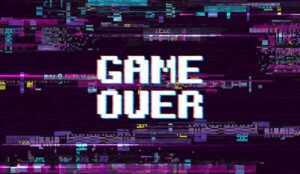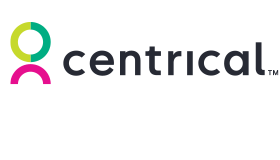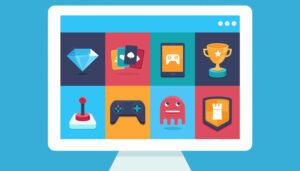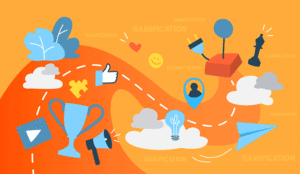Congratulations! You’ve decided to explore gamification as part of your frontline employee engagement strategy. Gamification is a powerful tool for motivating and engaging employees and building a high-performing frontline.
Additionally, gamification has progressed well past the humble leaderboard on the wall, with technology offering a truly customized experience for organizations and employees.
So why is your program likely to fail?
You read that right – according to Gartner, 80% of gamification projects fail. And yes, your well-intentioned strategy that could potentially bring tremendous results will likely not last long, or even get off the ground.
In this article, we’ll cover common reasons for failure and how you can avoid these pitfalls for a successful, long-term program.
Scary Stats and the Need for Gamification
Organizations are increasingly turning to gamification to motivate, engage, and retain employees while building a positive company culture. This is a smart move considering that workplace statistics are downright frightening.
Scary Stat 1
85% of employees are not engaged at work, with 67% of employees considered actively unengaged and doing the bare minimum (in other words, quiet quitting).
Scary Stat 2
Employee disengagement comes with a cost, clocking in at $3,400 for every $10,000 of the average salary earned by unengaged workers. (With these stats, that adds up fast, reaching into the millions per year.)
Scary Stat 3
According to Gallup, global stress levels remain at a record high, with 44% of their participants reporting that they had experienced “a lot of stress” the previous day.
In short, employees are disengaged and burnt out. If that weren’t enough, according to the same Gallup report, 51% of surveyed employees reported that they are looking for a new job. So these stressed-out and disengaged employees are ready to walk – which is also costly.
How to Play
Gamification is becoming more popular, but interestingly, not everyone has a grasp on what it is. (Nope, it’s not having your employees play games all day.)
Gamification is the application of game mechanics (leaderboards, badges, recognition and rewards, etc.,) to a non-game context, such as an enterprise business process (performance management, coaching, etc.). .
By tapping into intrinsic and extrinsic motivators, gamification changes behaviors to achieve an objective.
The goal is to create these behavior, habit, and pattern changes to drive long-term motivation and engagement for sustained performance and success.
A Recipe for Failure
Realizing the power of gamification is step one. Step two is implementing a thoughtful design. To reap the rewards, organizations need to get it right – here are a few places where it goes wrong:
Not Understanding Gamification
Understanding the purpose of gamification is key to designing a successful outcome. Additionally, it is important to remember that gamification isn’t just about competition – it feeds into the phenomenon of the quantified self.
Intrinsic motivation is a strong driver for engaging employees, who need to feel a sense of mastery and achievement in their work. Not understanding this is a great way to pull failure from the jaws of success.
Cutting Corners
This point follows that above – without fully understanding the potential impacts of gamification, your roadmap will be incomplete.
Taking shortcuts and slapping a static leaderboard or scorecard and a few badges into the employee workflow does nothing to motivate or engage your employees.
Only Scoring the Grind
When only rote and daily tasks are tied to gamification, the entire strategy loses meaning and employees will not be engaged over the long term – if they are even engaged in the first place.
Not Managing the Change
Embracing the philosophy of “If you build it, they will come” is no path to success. If employees don’t understand the strategy, how to participate, or what it means for them, you will have a poor or slow adoption rate.
Doom-Proofing Your Project
Despite the odds and the stats, no project is necessarily doomed to failure. Below are a few ways to win when it comes to gamification:
Invest in Advanced Gamification
Go beyond the leaderboard! Ensure that your roadmap includes both intrinsic and extrinsic motivators.
Include elements such as leaderboards, challenges and missions, badges, progress bars, levels, points, recognition and rewards, and an ongoing story and narrative.
Move the Middle
Leaderboards are integral to gamification, but can be demotivating, as they feature the same high achievers. When you couple this with the lower performers receiving the bulk of the coaching, you have about 65% of employees getting no recognition.
To truly leverage the power of the leaderboard, segment them by different personas to “move the middle” and recognize a variety of successes that apply to everyone, such as performance improvement.
Script the Behaviors
Direct employees to the next best action with feedback and learning. When they can easily see where they stand, employees are motivated to reach their goals faster.
Where there are areas of improvement, AI-powered microlearning modules can boost training and knowledge retention.
When employees complete the training, they can earn points and move up on a leaderboard; when their performance improves, they will receive kudos and an even higher spot on another leaderboard.
Make It Meaningful
By tying gamifications to goals, you are recognizing and rewarding actual achievements, and not just completing an admin checklist. Include pre-boarding tasks, onboarding training, learning and development, KPIs, wellness checks, and other notable elements and milestones.
We also recommend gamifying employee learning paths as part of employee growth and retention strategies.
Include a Social Element
Employees, especially those who have been around for a while, are tremendous resources of institutional and practical knowledge.
By implementing social sharing and rewarding helpful contributions, you will not only boost your workforce’s skill set and competence but also build a culture of collaboration and trust.
Get Users Excited
Change management is key to a successful implementation. When employees know what is being implemented, how to use the platform, and what the expectations are around their use, they are more likely to be engaged.
Start communications well before the launch, with periodic updates. Hold training sessions (and use microlearning to reinforce the training).
Summary and Key Takeaways
We’ve just covered the less-than-fun stats around employee engagement, and why so many gamification programs fail. Below are a few key takeaways:
Workforce surveys indicate that today’s employees are largely disengaged, stressed, and are probably looking for another job.
Gamification is a great way to engage and retain employees while making the workday more enjoyable.
Despite the best of intentions, 80% of gamification programs will fail. This is typically because of design shortcuts, not understanding the full scope of gamification, not gamifying aspects that matter, and poor change management.
A successful program involves gamifying the entire employee experience across the lifecycle, tying gamification to goals, going beyond the leaderboard, and implementing a robust change management program.
This blog post has been re-published by kind permission of Centrical – View the Original Article
For more information about Centrical - visit the Centrical Website
Call Centre Helper is not responsible for the content of these guest blog posts. The opinions expressed in this article are those of the author, and do not necessarily reflect those of Call Centre Helper.
Author: Centrical
Published On: 15th Jan 2024 - Last modified: 9th Dec 2024
Read more about - Guest Blogs, Centrical






 Centrical provides a real-time performance management, microlearning, gamification, coaching, and voice of the employee platform for frontline teams. The solution inspires and personally guides employee success and growth by making every moment actionable.
Centrical provides a real-time performance management, microlearning, gamification, coaching, and voice of the employee platform for frontline teams. The solution inspires and personally guides employee success and growth by making every moment actionable. 








